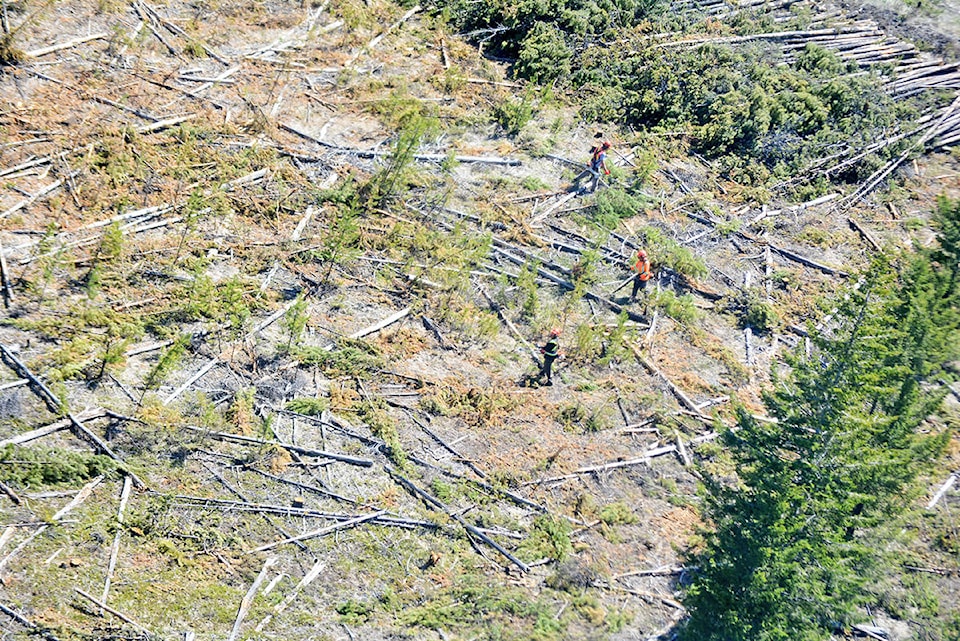By Jim Hilton
Forest Ink
A new report sponsored by the B.C. community forest association describes the many positive results from the establishment of this relatively new form of forest tenure. Some of the key conclusions of the report are the following: Employment in the forest sector has declined by almost 35,000 or 36 per cent over the last 15 years.
This has been particularly hard on Indigenous and rural communities in B.C. which have lost a number of the good paying jobs in their communities.
While the Community Forests (CF) make up just over 2.1 million cubic metres (3.1 per cent of the provincial Annual Allowable Cut in 2017) they have made a major impact on the communities where they have been established since 2000. These impacts include generating local employment, income, and social benefits. In a comparison to the Interior Forest Industry, Interior Community Forests clearly create greater employment per cubic metre of wood harvested. Based on 2017, harvest from Interior Community Forests created approximately 53 per cent more employment than the same volume harvested in the Total Interior Forest Industry.
READ MORE: Soil cavities reveal extensive root systems of burned trees
The author of the report Ray Schultz, RPF (retired) used a “multiple accounts” framework for the analysis. Based on revenues from stumpage, personal income taxes, local government property taxes, and contribution payments and dividends on a harvested volume of 1,466,638 m3 the Major Licensees pay approximately $24.8 million compared to $23.9 million by community forests. The key difference being Major Licensees make the majority of their payment to the provincial government while community forests revenues accrue to rural communities. Indigenous and rural communities with community forests are receiving several social benefits and building capacity in land management through collaborative decision making.
More specifically these benefits include: Indigenous public engagement, Investment in wildfire management and enhanced forest stewardship as well as Investment in education and recreation. Overall, community forests, through the various interactions and partnerships on the land base create the social licence to conduct sound forestry activity that can demonstrate benefits to Indigenous and rural communities and a range of engaged stakeholders.
READ MORE: Community forests conference delves into wildfire preparedness
While the report does an excellent job of describing the many advantages of the community forests, I think it is important to emphasize that not all CF have the same impact on the local communities because of their location.
A good comparison is the Powel River and Williams Lake Community Forest compared to the Eniyud CF located in around the communities of Puntzi Lake and Tatla Lake. Major differences in the productivity of the forest land base, lack of infrastructure, long haul distances and low population to staff critical positions have a significant impact on the profitability of more remote community forests.
Both community and government organizations must take into consideration the disadvantages of communities with existing and proposed community forests and other area based tenures in the remote areas that one form of tenure does not fit all situations. Annual rent, stumpage and taxes should be adjusted so that the fibre from the more remote areas will be delivered at a reasonable profit.
Jim Hilton is a professional agrologist and forester who has lived and worked in the Cariboo Chilcotin for the past 40 years. Now retired, Hilton still volunteers his skills with local community forests organizations.
